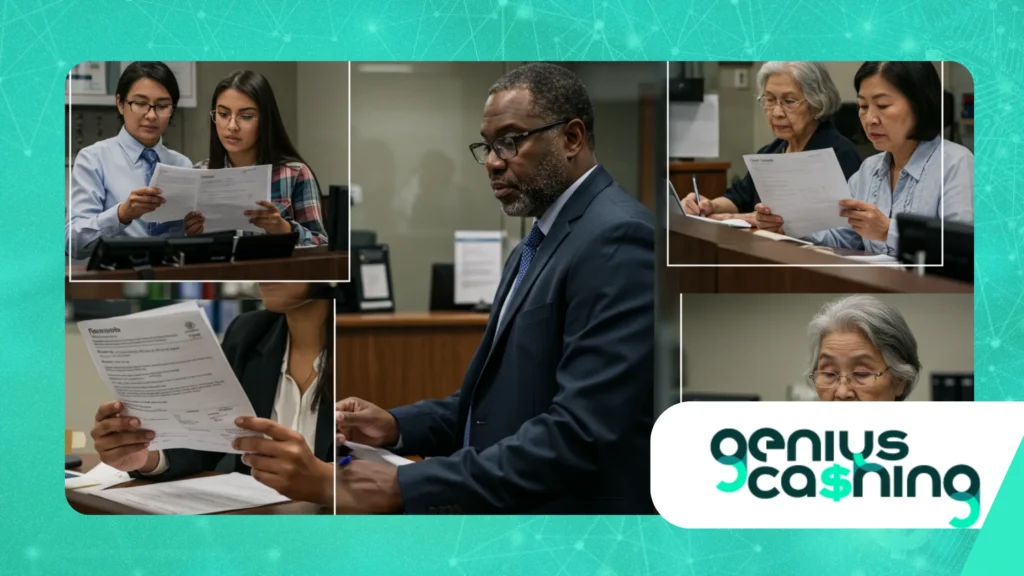How recent laws affect eligibility for government benefits

That’s the reality for millions this year, as recent laws affect eligibility for government benefits in ways that rewrite financial futures. We’re talking seismic shifts in Social Security, SNAP, Medicaid, and more changes signed into law amid heated congressional debates and economic pressures.
Anúncios
As a veteran journalist who’s covered welfare policy for over two decades, I’ve seen benefits evolve from bandaids to lifelines, but 2025’s reforms hit different. They promise fairness for some while tightening belts for others, sparking fierce arguments over equity versus efficiency.
Why does this matter to you, even if you’re not yet claiming checks? Because these updates ripple through family budgets, job markets, and community stability.
Recent laws affect eligibility for government benefits by recalibrating who qualifies, how much they get, and under what conditions often favoring work incentives over blanket aid.
Take the Social Security Fairness Act, which President Biden inked on January 5, 2025; it scraps outdated penalties that docked pensions for teachers and firefighters.
Anúncios
Suddenly, eligibility expands without new taxes, boosting take-home pay for 2.8 million folks, per the Social Security Administration’s July 2025 update. But flip to SNAP, and the One Big Beautiful Bill Act signed July 4 by President Trump slaps work mandates on adults up to 64, potentially sidelining single parents juggling gigs.
Critics howl that these tweaks favor fiscal hawks over the vulnerable, yet proponents counter with data showing employment surges post-reform. I argue it’s a double-edged sword: empowering self-reliance while risking coverage cliffs for those in flux.
Dive deeper, and you’ll spot intelligent design in the details like annual Thrifty Food Plan tweaks tied to inflation metrics aimed at sustainability. Or consider the rhetorical punch: Wouldn’t you fight tooth and nail if a law suddenly restored benefits your family earned but never touched? That’s the fire these changes ignite.
This piece unpacks the big four: Social Security liberation, SNAP’s tough love, Medicaid’s work hurdles, and marketplace shields.
We’ll weave in practical examples, a stat that stuns, and even an analogy to make it stick like tweaking a family recipe where you swap sugar for spice to suit modern palates, but risk alienating the old guard. Buckle up; knowledge here isn’t just power it’s your next deposit.
The Social Security Fairness Act: Unlocking Pensions for Public Heroes
Lawmakers finally axed the Windfall Elimination Provision and Government Pension Offset, effective January 2025. Public workers, long shortchanged, now claim full Social Security atop their pensions.
Picture Maria, a retired Chicago teacher with 35 years in the classroom. Pre-reform, WEP slashed her $1,200 monthly benefit by half because her state pension wasn’t Social Security-taxed. Now? Full payout restores $700 extra enough for grandkids’ tuition.
Recent laws affect eligibility for government benefits like this act, broadening access without hiking premiums. SSA reports over 3.1 million adjustments by July, totaling $17 billion disbursed ahead of schedule.
++ Child and Family Benefits: Claiming Child Tax Credits, Parental Leave & Support Schemes
Delays hit some rural claimants hardest, though. One Idaho firefighter waited three months for his $1,000 backpay, forcing credit card reliance amid rising utility bills.
Advocates push back: This isn’t charity; it’s correcting a 1980s glitch that ignored hybrid careers. Yet skeptics warn of trust fund strains projected shortfalls loom by 2034.
Boost your claim odds by verifying non-covered work history now. SSA’s online portal simplifies it, cutting paperwork woes.

SNAP Reforms Under the One Big Beautiful Bill: Work Mandates Reshape Food Security
Signed amid July fireworks, this act ramps SNAP work requirements to age 64 from 50, starting November 2025. Exemptions shield the disabled, but able-bodied adults face three-month benefit caps without 80 hours monthly employment.
Consider Jamal, a Detroit dad in his late 50s, pivoting from factory layoffs to gig driving. The old rules let him slide; now, he logs shifts or loses grocery aid for his teen daughter recent laws affect eligibility for government benefits by demanding proof of hustle.
USDA data flags 1.2 million at risk nationwide, per September memos. States like Pennsylvania gear up with job fairs, yet rural gaps persist.
Also read: Self-Employed But Supported: Government Aid That Works for You
Thrifty Food Plan updates, pegged to CPI-U, hike allotments 5% October 1 smart inflation hedge, but critics say it ignores fresh produce spikes in food deserts.
I contend this pushes dignity over dependency, echoing 1996 welfare overhauls that spiked employment 10%. Still, for gig workers, it’s a treadmill race.
| SNAP Eligibility Change | Pre-2025 Rule | Post-OBBB 2025 Rule | Impact Example |
|---|---|---|---|
| Able-Bodied Adult Age Limit | Up to 50 | Up to 64 | A 55-year-old loses benefits after 3 months without 80 work hours, affecting 500,000+ households. |
| Non-Citizen Access | Broader qualified immigrants | Stricter lawful permanent residents only after 5 years | Delays aid for recent green card holders fleeing climate disasters. |
| Thrifty Food Plan Adjustment | Biennial review | Annual CPI-U tie-in | Boosts average family allotment from $291 to $306 monthly. |
| SNAP-ED Funding | Ongoing grants | Ends FY2025 allocation | Cuts nutrition classes, hitting 20 million participants indirectly. |
This table, drawn from FNS guidance, spotlights precision tweaks vital for planners eyeing 2026 budgets.
Waiver expansions for high-unemployment zones (over 10%) offer lifelines, yet only Alaska and Hawaii snag noncontiguous perks.
Medicaid Expansion Tweaks: Balancing Work and Wellness in the Reconciliation Bill
July’s budget showdown birthed work mandates for expansion adults by December 2026 20 hours weekly proof or forfeit coverage. States opt-in early, but errors trigger audits.
Envision Lisa, a Nashville nurse aide sidelined by childcare gaps. She qualifies under 138% FPL but skips shifts for kid drop-offs; new rules demand exemptions or job logs, recent laws affect eligibility for government benefits via bureaucratic hoops.
KFF tracking notes 17 million at coverage risk if fully slashed, though phased rollouts soften blows. Proponents tout health gains from employment lower obesity rates in mandated groups.
Payment error rates above 20% delay penalties to 2029, giving sloppy states breathing room. Intelligent? Absolutely, if it curbs fraud without blanket cuts.
Read more: The Most Underused Government Benefits for Working Parents
Analogy time: These reforms resemble pruning a wild garden trim excess for growth, but overdo it and roots wither. Medicaid’s expansion group, post-ACA, covers 15 million; tweaks aim sustainability.
Rural clinics brace for uninsured surges, prompting telehealth incentives. Apply exemptions proactively; state portals now integrate work verifiers seamlessly.
Healthcare Marketplace Safeguards: The 2025 Integrity Rule’s Quiet Revolution
CMS dropped this June gem, fortifying ACA exchanges against shady enrollments. Auto-renewals demand income recertification, nixing ghost policies that drained $2 billion yearly.
Think Alex, a freelance coder whose broker fudged his subsidy app last year. The rule’s AI flags trigger reviews, restoring his $400 monthly premium cut recent laws affect eligibility for government benefits through vigilant gates.
Finalized safeguards include 12-month redeterminations, slashing improper payments 15%, per CMS estimates. Agents face stiffer licensing, curbing bad actors.
I argue this empowers consumers, not just bureaucrats transparency trumps tolerance for cheats. Yet small brokers gripe about compliance costs hiking fees.
Open enrollment tweaks, starting November, bundle mental health riders automatically for low-income qualifiers. Enroll early; portals crash under traffic spikes.
One stat floors me: Nearly 68 million snag the 2.5% Social Security COLA this January, per SSA’s June announcement yet marketplace tweaks ensure subsidies sync, averting overlaps. Cross-program harmony? Game-changer for multi-benefit households.
Navigating the Broader Ripple: Tax Credits and Beyond in 2025’s Fiscal Maze
Don’t overlook the Child Tax Credit’s quiet revival via reconciliation riders income thresholds rise to $200,000 single filers, folding in more middle-class families. Eligibility now hinges on SSN verification, closing loopholes.
Sarah, a Phoenix entrepreneur with two kids, dodged the full $2,000 credit pre-reform due to phase-outs. Now, partial refunds flow, easing daycare squeezes recent laws affect eligibility for government benefits by democratizing relief.
IRS data projects 40 million claims up 8% from 2024, fueled by inflation adjustments. Smart policy rewards earners without bloating deficits.
Critics decry SSN mandates as barriers for immigrants; advocates counter with fraud drops 15% fewer bogus filings last cycle.
Layer this atop EITC expansions for gig workers: Earned income qualifiers hit 150% FPL, blending seamlessly with SNAP verifications. Practical tip: Use IRS Free File for simulations; it flags interactions with other aids, saving audit headaches.
Wrapping It Up: Empower Yourself Amid 2025’s Benefit Shake-Up
We’ve dissected how recent laws affect eligibility for government benefits, from Social Security’s pension thaw to SNAP’s work gauntlet, Medicaid’s mandates, marketplace moats, and credit expansions. These aren’t abstract edicts they’re your grocery run, doctor’s visit, or kid’s braces fund.
The argumentative core? Reforms tilt toward accountability, urging work where possible while mending inequities.
But vigilance matters: 2.8 million reclaimed Social Security dollars prove fairness wins, yet SNAP’s 1.2 million at-risk underscore compassion’s cost. Like that family recipe analogy, 2025’s blend spices opportunity with caution taste-test via state hotlines.
Action step: Audit your apps today. Tools like Benefits.gov integrate updates, spotting overlaps. As inflation eases to 2.1% per Fed notes, these laws position aid as bridge, not crutch.
What if ignoring them costs your stability? Engage now call your rep, join forums, claim what’s yours. In this fiscal flux, informed citizens thrive. Stay tuned; next quarter’s COLA whispers could shift sands again.
Frequently Asked Questions
Q: Does the Social Security Fairness Act retroactively pay back docked benefits?
A: Yes, eligible folks receive lump sums for up to five prior years, processed swiftly by SSA check your notice for details.
Q: How do SNAP work requirements exempt caregivers?
A: Parents of kids under 7 or those aiding disabled relatives qualify automatically; submit proof via state apps to lock it in.
Q: Will Medicaid work rules apply nationwide by 2026?
A: No, states choose timelines opt for early if ready, but most phase in, monitoring error rates closely.
Q: Can I appeal a marketplace subsidy denial under the new rule?
A: Absolutely; 60-day windows via Healthcare.gov include income appeals gather pay stubs for quick reversals.
Q: How does the Child Tax Credit tie into other benefits?
A: It phases with AGI but doesn’t count against SNAP/Medicaid thresholds use IRS simulators for seamless stacking.
